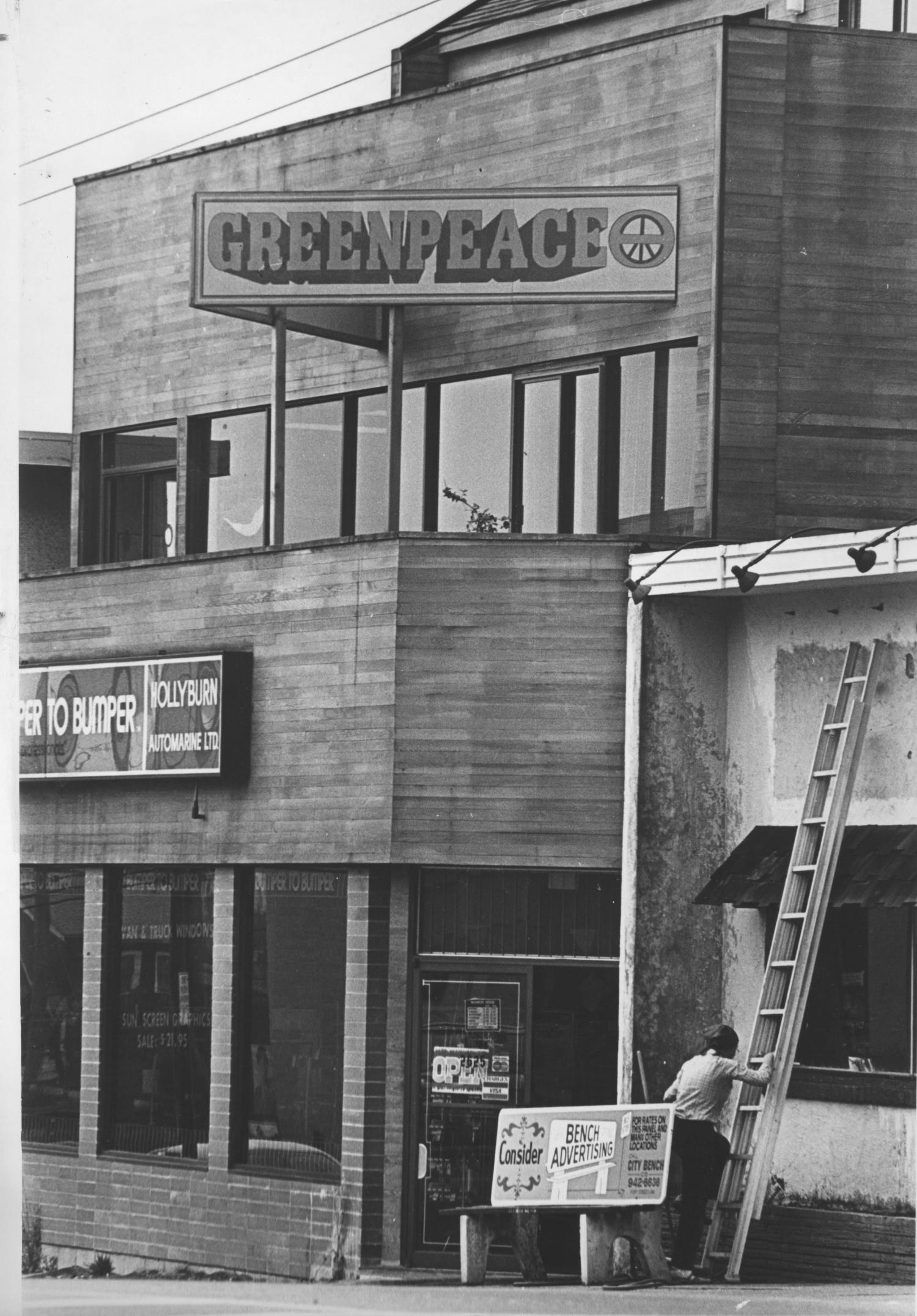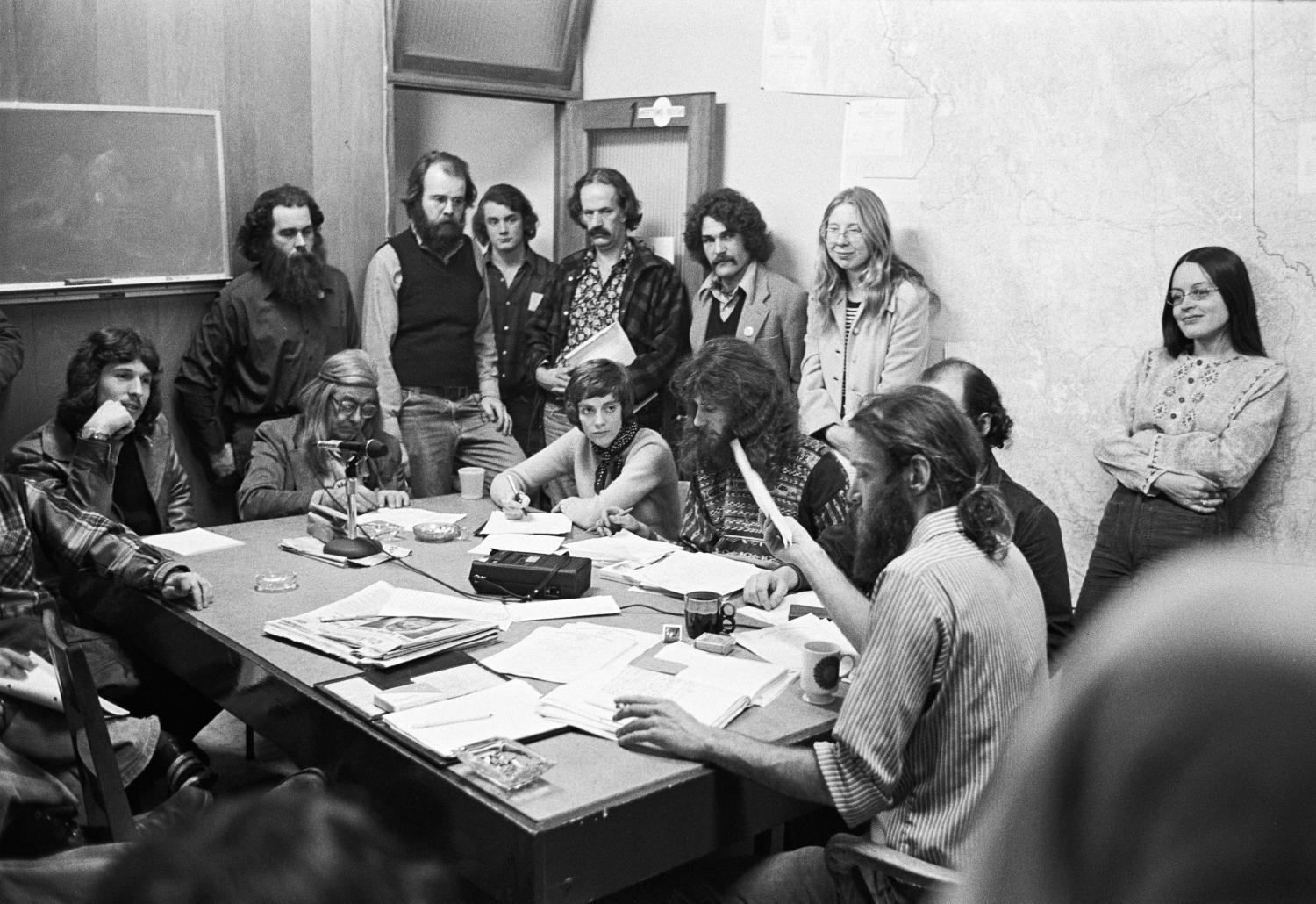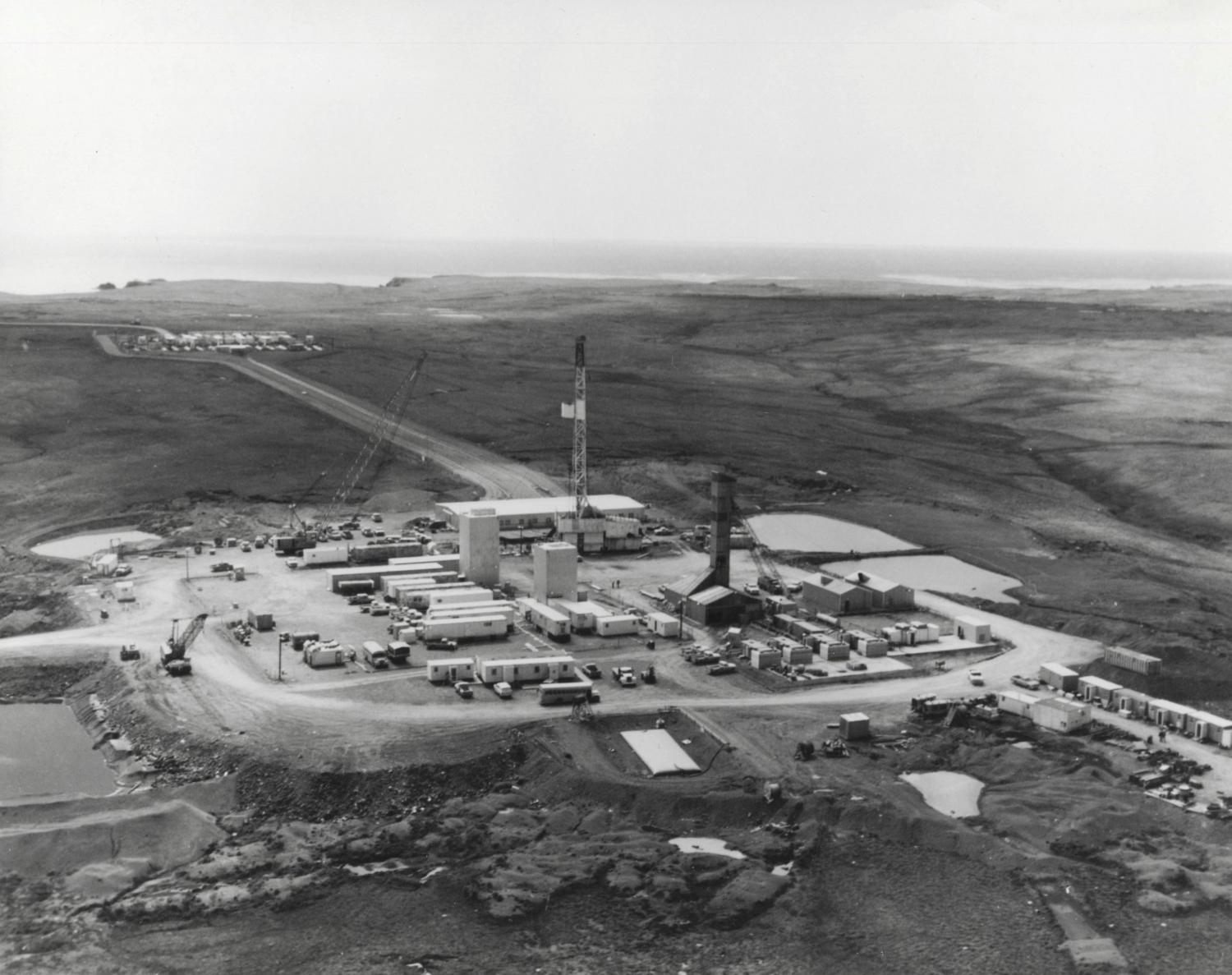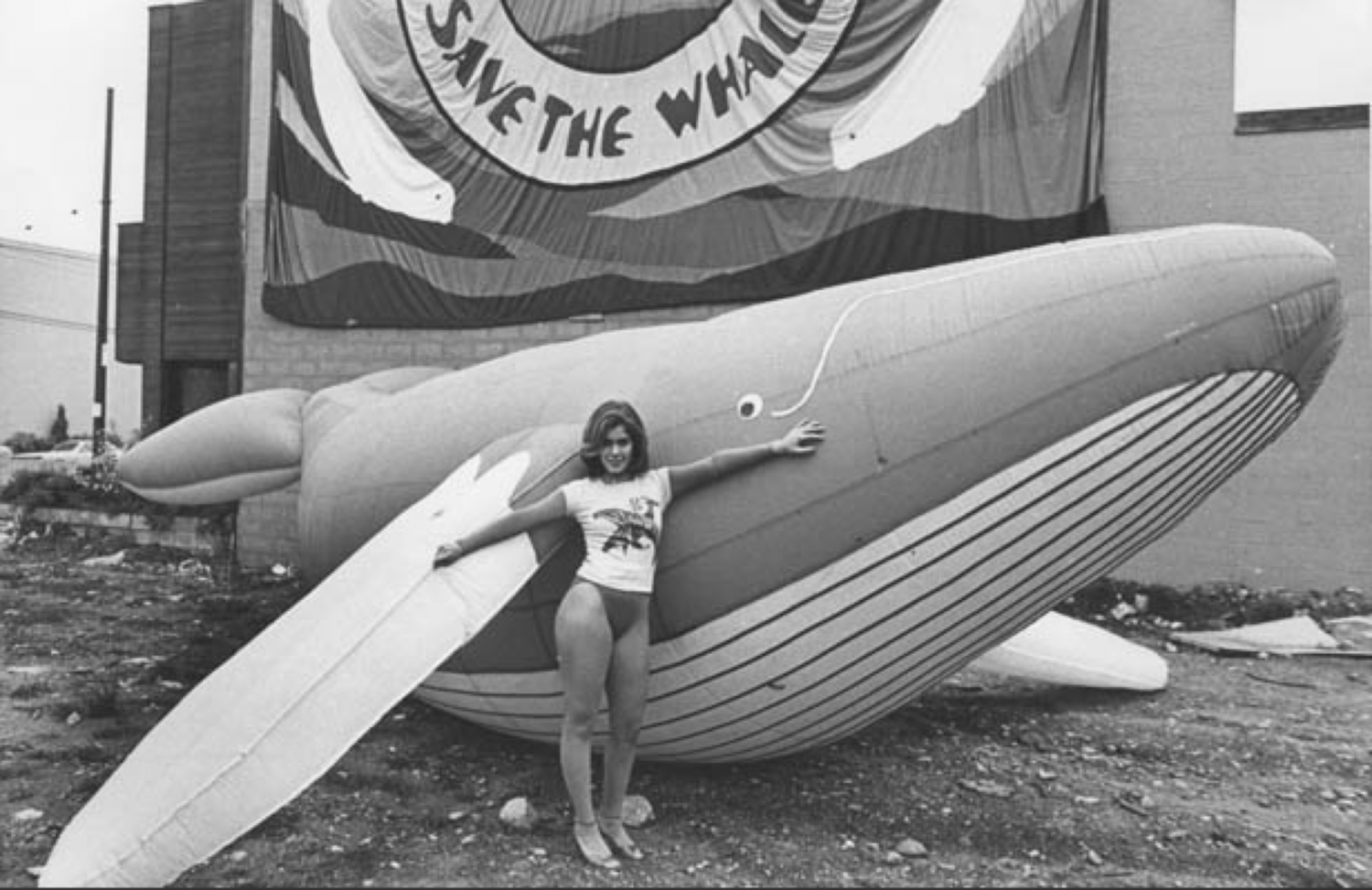Greenpeace Forms in B.C.
A single anti-war demonstration leads to a sensational ecological foundation
Date: 1971
Amchitka Island is a wild, desolate place, rugged and fog-covered most of the year. It sits at the end of the Aleutian Islands, a chain of volcanic formations that cut westward across Arctic waters from Alaska. In the 1960s, the United States saw value in Amchitka’s extreme remoteness. The country was developing an anti-ballistic missile and needed a site for underground nuclear testing. The test, though, promised enormous blasts — 400 times more powerful than the Hiroshima bomb. A growing number of people along the West Coast were worried. “There is a distinct danger that the tests might set in motion earthquakes and tidal waves which could sweep from one end of the Pacific to the other,” Vancouver Sun journalist Bob Hunter wrote in November 1969. “The United States [is playing] a game of Russian Roulette with a nuclear pistol pressed against the head of the world.”
A group of like-minded environmentalists, including scientists and journalists, joined forces in Vancouver. The Don’t Make a Wave Committee, as they called themselves, hatched a plan. On Sept. 15, 1971, two months before the scheduled test, a small fishing trawler set forth from Vancouver to Amchitka. The group’s mission was both environmental and anti-war in nature, reflected in the name painted across the helm of the boat: “The Greenpeace.” The crew never did make it to Amchitka — the U.S. Coast Guard intercepted the vessel and charged it with a customs infraction. But the voyage had become an international media sensation; back in B.C., it had united hippies, union workers and political conservatives alike in protest. While the nuclear test proceeded as planned, fortunately yielding no tidal wave, the Nixon Administration had been cowed. Within a few months, the U.S. would abandon the test series altogether, and Amchitka would be turned from a nuclear test site to a wildlife sanctuary. It was a victory for the committee. In 1972, they renamed their organization after the boat that had dared sail against the American military.
In the years that followed, the World Greenpeace Foundation’s leaders moved to “put the green in Greenpeace,” prioritizing its ecological mission. This burgeoning environmentalism was distinct from the established anti-war counterculture in British Columbia, and the world watched as the organization sailed into other nuclear zones and interfered with Russian whaling boats. Its anti-whaling campaign, in particular, won acclaim across the globe. By the mid-1970s, new chapters of Greenpeace had begun forming in cities like Paris, San Francisco, and Auckland, New Zealand. In 1979, Greenpeace International was established, and the group relocated its headquarters to Amsterdam.
In its half a century of operations, Greenpeace has seen its share of wins and losses. Through campaigns — often provocative in nature — the group started public conversations on whaling and sealing, deforestation and nuclear testing. The growing awareness of environmental issues has resulted in global policy change, such as the 1982 whaling moratorium adopted by the International Whaling Commission and the 1996 Comprehensive Nuclear-Test-Ban Treaty put in place by the United Nations. However, the organization has not escaped controversy, including in 1986, when one of its founders dropped his affiliation with Greenpeace and began working on behalf of nuclear power companies. And the group’s penchant for the dramatic has drawn criticism from some who don’t consider it to be a serious environmental organization.
Nevertheless, what started as a small group of concerned Vancouverites has become an international organization with a household name, one that can now boast of 2.8 million supporters and offices in 55 countries.
Sources:
- Colby, Jason. "Cetaceans in the City: Orca Captivity, Animal Rights, and Environmental Values in Vancouver." Animal Metropolis: Histories of Human-Animal Relations in Urban Canada, University of Calgary Press, Feb. 2017, pp. 285–305.
- Dearden, P., and S. Augustine. "Greenpeace." The Canadian Encyclopedia, 21 Feb. 2010, https://www.thecanadianencyclopedia.ca/en/article/greenpeace.
- Kovarik, Bill. "The Origins of Greenpeace." Environmental History, 2 May 2013, https://environmentalhistory.org/people/greenpeace/.
- Miller-Walfish, Summer. "Greenpeace Campaigns against Whaling, 1975-1982." Global Nonviolent Action Database, 23 Oct. 2010, https://nvdatabase.swarthmore.edu/content/greenpeace-campaigns-against-whaling-1975-1982.
- Montgomery, Marc. "History: Sept 15, 1971, the Canadian Origins of Greenpeace." Radio Canada International, 16 Sept. 2015, https://www.rcinet.ca/en/2015/09/16/history-sept-15-1971-the-canadian-origins-of-greenpeace/.
- Moore, Patrick Albert. "Who Are the Founders of Greenpeace." Greenspirit Strategies Ltd., 13 June 2012, http://greenspiritstrategies.com/who-are-the-founders-of-greenpeace/.
- "Our Story." Greenpeace Canada, https://www.greenpeace.org/canada/en/about-us/history-successes/. Accessed 5 May 2021.
- "Paul Spong - Whale Research." Technology Trends, https://www.primidi.com/paul_spong/whale_research. Accessed 5 May 2021.
- Sauven, John. "Greenpeace: Origins, Campaigns and Visions." Richard Sandbrook Trust, Dec. 2012, http://richardsandbrooksplace.org/john-sauven/greenpeace-origins-campaigns-and-visions.
- Weyler, Rex. "Greenpeace Gets a Name." The Tyee, 10 Sept. 2004, http://thetyee.ca/Citizentoolkit/2004/09/10/GreenpeaceGetsName/.






